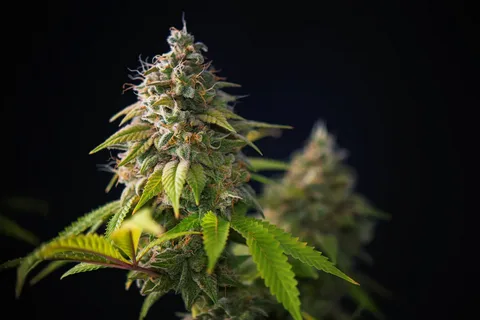Cooking with cannabis is a rising trend in the culinary world, skillfully combining traditional gastronomic techniques with cannabis’s distinctive properties. This fusion creates innovative dishes that offer unique flavors and the potential therapeutic benefits of cannabis, revolutionizing the culinary arts with new tastes and experiences.
This guide is designed to explore the intricate process of using cannabis in cooking, from selecting the right strains to understanding the science behind it.
Table of Contents
Selecting the Right Cannabis
Choosing the right cannabis strain is paramount in culinary cannabis use, as each strain imparts distinct flavors and effects. Sativa strains generally yield a more uplifting and energizing effect, ideal for dishes meant to invigorate. In contrast, Indica strains offer a more sedative effect, suitable for relaxing or nighttime dishes. Hybrid strains provide a middle ground, blending the characteristics of both Sativa and Indica.
When selecting a strain, it’s essential to consider the intended effect of the dish and how the strain’s flavor profile—ranging from earthy and musky to sweet and fruity—will complement and enhance the ingredients in the recipe.
Decarboxylation: Activating Cannabis
Decarboxylation is a critical process in cannabis cooking, involving the application of heat to activate THC, the primary psychoactive compound in cannabis. This is typically achieved by baking the cannabis at a low temperature. The heat transforms the non-psychoactive THCA in raw cannabis into the psychoactive THC. This process is essential as it maximizes the effectiveness and potency of cannabis in the final culinary creation.
Without decarboxylation, the cannabis added to any dish would have minimal psychoactive effects, thus limiting its impact and the overall experience.
Infusing Cannabis into Cooking
Infusing cannabis into cooking involves incorporating decarboxylated cannabis into various mediums like butter, oil, or milk. This step is crucial for integrating cannabis into a wide range of recipes. The infusion process requires careful temperature control; too high heat can degrade the THC, while too low may result in uneven distribution.
The goal is to achieve a consistent potency across the infusion, ensuring that each serving of the final dish has a predictable and uniform effect. This process allows the unique flavors and properties of cannabis to be seamlessly integrated into virtually any recipe, from baked goods to savory sauces.
Understanding Dosage and Potency
Mastering dosage and potency is essential in cannabis cooking. The effect of a cannabis-infused dish depends on the THC content of the cannabis strain used and the quantity incorporated into the recipe. Starting with a lower dosage and gradually increasing it allows for better control over the potency of the final product.
It’s important to remember that edibles take longer to produce effects—often up to two hours. This delayed onset requires patience and caution to avoid overconsumption. Understanding and carefully managing dosage ensures all dish consumers have a safe and enjoyable experience.
Flavor Pairing and Recipe Ideas
Successfully pairing flavors with cannabis is key to creating enjoyable and sophisticated edibles. Cannabis possesses a unique flavor profile, often described as earthy, piney, or herbal, which can be creatively paired with various ingredients. For instance, the herbaceous notes of cannabis complement the richness of chocolate and the freshness of citrus or mint.
Popular cannabis-infused recipes include classics like brownies and cookies and more savory options such as pasta sauces and salad dressings. The goal is to balance the distinct taste of cannabis with other flavors in the dish, resulting in a harmonious and delightful culinary creation.
Weed Smell Removal in the Kitchen
While cooking with cannabis, managing the resultant odor is crucial to maintaining a pleasant kitchen environment. The aromatic compounds in cannabis, while desirable in the dish, can permeate the kitchen space and, in some cases, the clothes.
Thankfully, experts in the cannabis industry recommend some effective methods for weed smell removal, such as utilizing air purifiers and natural odor absorbers like baking soda and ensuring proper ventilation during and after cooking. These techniques can help neutralize the cannabis smell, ensuring the kitchen remains a welcoming space for cooking and gathering.
Safety and Legal Considerations
Navigating the legal and safety aspects of cooking with cannabis is essential. The legality of cannabis use varies significantly across different regions, making it crucial to be well-informed about local laws and regulations.
Additionally, when preparing cannabis-infused dishes, it’s essential to consider the safety of those consuming them. This includes being mindful of the dosage and potential allergies and ensuring that all consumers are aware of the presence of cannabis in the food. Responsible cooking and consumption practices provide everyone involved with a safe and legal experience.
Storing Cannabis-Infused Edibles
Proper storage of cannabis-infused edibles is vital to preserve their potency, flavor, and safety. Edibles should be kept in airtight containers to prevent exposure to air and light, which can degrade THC and other cannabinoids. Storing them in a cool, dark place helps maintain their freshness and effectiveness over time.
Furthermore, labeling these edibles with the date of preparation and potency information is a good practice. This helps monitor their freshness and ensures that they are consumed responsibly, with a clear understanding of their potency.
The Bottom Line
Cooking with cannabis opens up a new realm of culinary possibilities, combining the pleasures of cooking with the unique effects of cannabis. By keeping the information mentioned above in mind, anyone can embark on this exciting culinary journey. Remember to always prioritize safety, legality, and responsible consumption.








